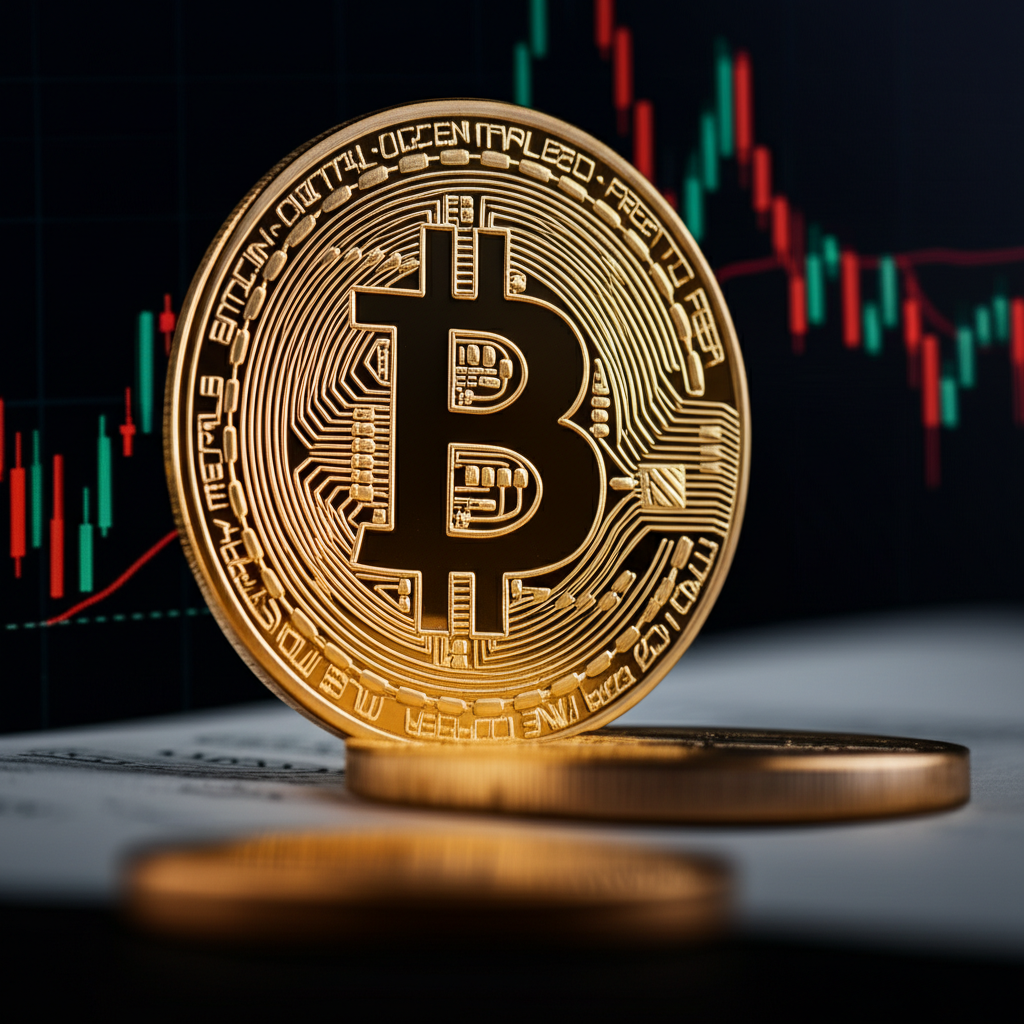Subtitle: Despite global economic uncertainties and an intensifying regulatory environment, major digital assets like Bitcoin demonstrate remarkable resilience.
The cryptocurrency market continues to navigate a complex interplay of global macroeconomic factors and a rapidly evolving regulatory landscape. In recent days, market participants have closely watched inflation data and central bank signals, which cast a shadow of uncertainty over risk assets. Concurrently, ongoing discussions around digital asset regulation across key jurisdictions are shaping future industry development and investor sentiment, highlighting a period of both challenge and potential for maturation.
Macroeconomic Headwinds and Market Resilience
Recent economic data, particularly inflation figures and central bank commentary on interest rates, have created a palpable tension across global financial markets, with cryptocurrencies feeling the ripple effect. Despite this backdrop of uncertainty, Bitcoin has largely demonstrated a notable resilience. While traditional risk assets often experience significant downturns during periods of high inflation or restrictive monetary policy, Bitcoin has at times decoupled, or at least shown less volatility, than anticipated. This performance has fueled ongoing debates about its role as a potential hedge or a maturing asset class less susceptible to conventional market jitters, although its correlation with broader tech stocks remains a point of discussion for analysts watching its price action closely.
The Evolving Regulatory Landscape
The quest for regulatory clarity remains a dominant theme in the crypto space, with significant developments emerging from key global jurisdictions. In the United States, discussions surrounding legislative frameworks continue, as various government bodies attempt to define the classification and oversight of digital assets. Internationally, regions like the European Union are progressing with comprehensive frameworks such as MiCA (Markets in Crypto-Assets), which aims to provide a harmonized approach to crypto regulation. These efforts, though sometimes slow, are crucial for fostering institutional adoption and providing a clearer path for businesses operating in the digital asset sector, influencing investor confidence and market sentiment daily.
Institutional Engagement and ETF Momentum
The sustained interest from traditional financial institutions continues to be a cornerstone of the cryptocurrency market’s maturation. Following the approval of spot Bitcoin Exchange-Traded Funds (ETFs) in the U.S., these investment vehicles have seen significant inflows, indicating a growing comfort among institutional and retail investors with regulated access to digital assets. This trend reflects a broader acceptance of cryptocurrencies as a legitimate asset class. Beyond ETFs, major financial players are exploring various integration strategies, from offering digital asset custody services to developing blockchain-based solutions, further blurring the lines between traditional finance and the nascent crypto economy.
Innovation in Decentralized Finance (DeFi) and Layer 2s
Beyond the price movements of major cryptocurrencies, the underlying technological innovation within the Decentralized Finance (DeFi) ecosystem and Layer 2 scaling solutions continues to push boundaries. Recent advancements include new protocols aimed at enhancing capital efficiency, the burgeoning trend of Real World Asset (RWA) tokenization bringing tangible assets onto the blockchain, and significant progress in liquid staking derivatives. Concurrently, Layer 2 networks are expanding their capabilities and adoption, offering faster and cheaper transactions crucial for mainstream use. These innovations are steadily improving the scalability, security, and utility of decentralized applications, laying the groundwork for broader adoption.
Key Technological Upgrades Driving Ecosystem Growth
The continuous evolution of blockchain technology is a fundamental driver of the crypto market’s long-term potential. Major network upgrades, such as Ethereum’s recent Dencun upgrade, signify critical milestones in enhancing network efficiency and reducing transaction costs. These improvements are vital for supporting the growing demand for decentralized applications and services. Other prominent blockchain networks are also consistently rolling out updates aimed at improving scalability, security, and developer experience. These technological advancements not only bolster the foundational infrastructure of the digital economy but also inspire confidence in the long-term viability and utility of the entire crypto ecosystem.
Conclusion
The cryptocurrency market, particularly Bitcoin, continues to exhibit a dynamic response to external pressures while maintaining an underlying trajectory of technological innovation and increasing institutional acceptance. As regulatory frameworks slowly coalesce and macroeconomic conditions stabilize, the digital asset ecosystem appears poised for sustained, albeit carefully managed, growth. The ongoing narrative is one of adaptation and maturation, underscoring the industry’s long-term potential and its evolving role in the global financial landscape.

